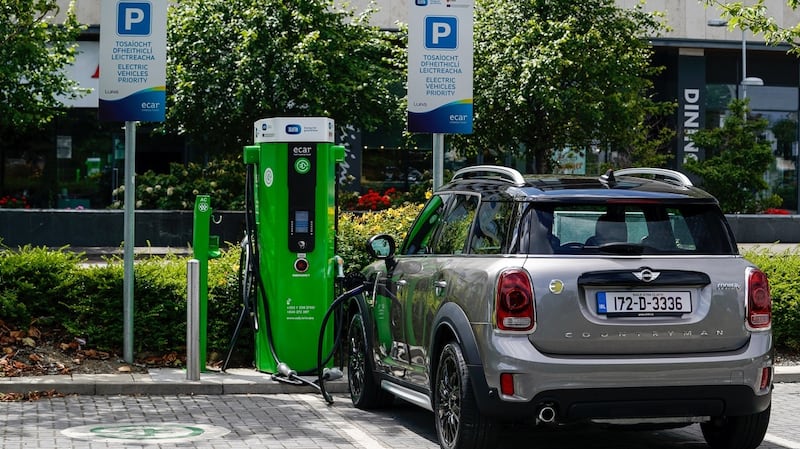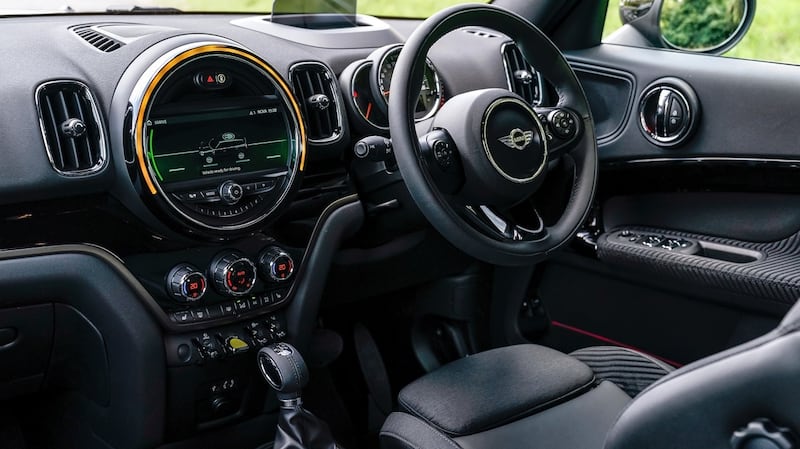The whole point of plugin hybrid electric vehicles (PHEVs) is to lay the ground for fully electric cars. Until such time as your average family hatchback comes with a sufficient battery capacity for a 600km non-stop range (or until someone figures out that it’s not enough for the public charging network to be merely adequate, but that it must over-deliver if it’s to raise people’s confidence in electric vehicles), then these plugins are going to be the easiest way to make the transition from burning petrol or diesel to stripping electrons.
Theoretically, a PHEV offers the best of both world – you get a rechargeable battery and an electric motor which can convey you silently and saintly around town on short hops, but there’s a conventional petrol engine and a tank of fuel should you need to undertake a longer journey. Plus, being a hybrid, such a car should provide very decent fuel economy on those longer runs, further easing the transition, especially for former diesel drivers.
So confident are carmakers in the potential of plugin hybrids that some (Hyundai for instance) is planning to phase out conventional, non-plugin hybrids altogether.
So, that all being the case, one of these cars is not like the other. One of these two plugin hybrids does not do what it says on the tin, which is to provide the perfect combination of an electric and a conventional car. And it’s not the cheaper one, either…
The Mini Countryman Cooper S E-Hybrid All4 joins the ranks of cars with stupidly long names (technically you can append PHEV to the end of it too) which try to cover all the bases. Mini means cute, adorable, fun to drive. Countryman means all that but it’s been to the gym and put on some bulk. Cooper S means all of that but with allusions (illusions?) of hot-hatch grandeur, while E-Hybrid means it’s a plugin, and All4 means that it has four-wheel drive. That’s because while the 1.5-litre 136hp three-cylinder turbo engine powers the front wheels, there’s an 88hp electric motor under the boot, which drives the rear wheels.
Pretty brisk
That also means this big (1,600-odd-kilos) Mini has 224hp and 365Nm of torque. Which means it’s pretty brisk, in keeping with that Cooper S badge. 100km/h comes up in 6.8secs, and with all that electric torque, you can really shuffle along with more than a little vim.
Best of all, if you only just survived the recent cold snap and are worried about how electric cars are going to be on snow and ice, the answer in this case is brilliant. Clearly channelling some of the sixties Monte Carlo rally spirit of its ancestors, the hybrid Mini proved both unstoppable and unstoppably good fun in the recent snow, sliding just enough to be fun, but always seeming to find traction and grip when you needed it to.

It’s nice inside, too. Those Mini purists who deride the Countryman model for its bulk and size are clearly hurling from a childless ditch – space is very good, front and back, and in spite of the electric motor and the 7.6kWh battery pack, there’s still a decent 405-litre boot. Build quality is excellent, and while the cabin’s design and layout is a touch polarising, I do rather like it.
However, there is a problem. And it's a biggie. A 30mpg biggie. Because, yep, that's what we managed to squeeze out of the Mini PHEV during a full week of driving. Okay, so it was cold (which is no help to batteries), and plugging it in at home was problematic, but even so… mostly doing short hops around town, and with a couple of long motorway runs, the PHEV Cooper S struggled to beat an old Land Rover Discovery for real-world fuel consumption.
Forget the claimed 134mpg figure (ha!), the combo of 30mpg and a tiny 36-litre fuel tank means you're not going to get very far, and you've paid €55,000 for the privilege, in the case of our optioned-up test car. It's baffling – BMW manages to make its PHEV 330e and 530e reasonably economical even when running them in battery-drained, normal-hybrid mode. So why not the Mini?
Whereas the original 1959 Mini was designed to give working families an affordable and roomy car that was exceptionally economical, here we have a bleeding-edge tech modern Mini that's about to have its backside handed to it by a humble Kia.
We’ve driven the Kia Niro in regular no-plug hybrid form before, and it’s almost entirely, forgettably, grand. Goes. Stops. Turns (sort of). It’s the epitome of painless motoring, and pretty frugal into the bargain. This plugin version looks a little costly compared to the standard Niro (€35,995 compared to €30,495 for the standard model) but it’s positively pound shop compared to the Mini’s price tag.
Crossover appeal
Not the most exciting car to look out, ours came with a beige-on-beige interior that has a slightly smaller boot than that of the Mini (324 litres) but which still manages to pull off a bit of crossover appeal (even if it’s really an estate with attitude). Kia hasn’t made any major mechanical changes to convert the Niro to a plugin – just more batteries and a bigger electric motor, but this one does feel a touch more positive to drive. Maybe the extra weight just wakes the suspension up a bit more. Whatever, it’s pleasantly undemanding from behind the wheel, which is in sharp contrast to the Mini’s engagingly effusive chassis.
Where the Niro really scores is on economy, though. It’s thawed a bit since we drove the Mini, albeit still pretty chilly first thing in the morning (the heated seats and steering wheel really help; the Mini had the hot seats but not the wheel).
But the Niro gives the Mini a good kicking when it comes to saving fuel. All the way up the M1 motorway to Belfast, even with the battery fully drained, the Niro recorded better than 60mpg, and it repeated that trick around town. Plug it in for a bit and it’ll do a claimed 58km on just the battery (more like 40km really, but that’s not bad) although it doesn’t seem to let you have the heating on without running the engine, which is annoying.
Claimed economy is a ridiculous 217mpg, but while the 29g/km Co2 figure is 20g/km head of the Mini, it costs the same €170 a year to tax. The Niro is much slower than the Mini, with 141hp in total, but it never feels sluggish nor disgraced by the faster car.

In fact, I’d say it’s a better car all round than Toyota’s slightly more expensive Prius Plugin, which has a nicer interior than the Niro, but isn’t as practical. And the Mini? The Niro leaves the overpriced, underperforming Mini reeling in its exhaust of electrons.
The lowdown: Mini Countryman Cooper S E-Hybrid All4
Price: €55,342 as tested. Countryman E-Hybrid range starts from €44,730.
Power: 224hp.
Torque: 365Nm.
0-100km/h: 6.8sec.
Top speed: 198km/h.
Claimed economy: 134.5mpg (2.1 litres/100km).
CO2 emissions: 149g/km.
Motor tax: €170.
Verdict: Far too thirsty for a plugin, and too expensive to boot. Fun in the snow, though.
Our rating: 2/5
Kia Niro Plugin Hybrid
Price: €35,995 as tested. Niro range starts from €30,495.
Power: 141hp.
Torque: 265Nm.
0-100km/h: 10.8sec.
Top speed: 172km/h.
Claimed economy: 217.2mpg (1.3 litres/100km).
CO2 emissions: 29g/km.
Motor tax: €170.
Verdict: Simpler and cheaper than the Mini, and far more effective. An easy transition from petrol to part-electric motoring.
Our rating: 4/5











